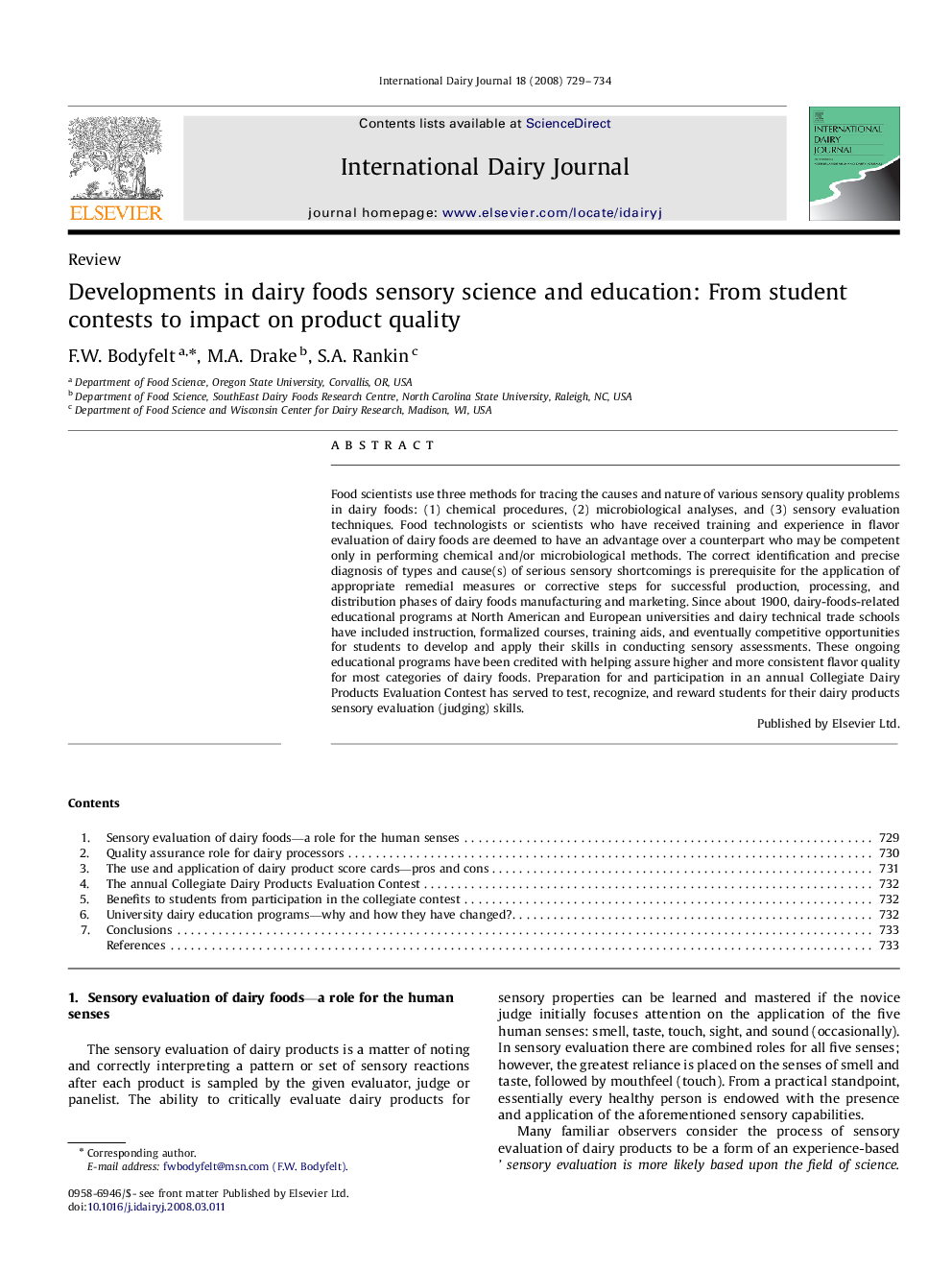| Article ID | Journal | Published Year | Pages | File Type |
|---|---|---|---|---|
| 2435167 | International Dairy Journal | 2008 | 6 Pages |
Food scientists use three methods for tracing the causes and nature of various sensory quality problems in dairy foods: (1) chemical procedures, (2) microbiological analyses, and (3) sensory evaluation techniques. Food technologists or scientists who have received training and experience in flavor evaluation of dairy foods are deemed to have an advantage over a counterpart who may be competent only in performing chemical and/or microbiological methods. The correct identification and precise diagnosis of types and cause(s) of serious sensory shortcomings is prerequisite for the application of appropriate remedial measures or corrective steps for successful production, processing, and distribution phases of dairy foods manufacturing and marketing. Since about 1900, dairy-foods-related educational programs at North American and European universities and dairy technical trade schools have included instruction, formalized courses, training aids, and eventually competitive opportunities for students to develop and apply their skills in conducting sensory assessments. These ongoing educational programs have been credited with helping assure higher and more consistent flavor quality for most categories of dairy foods. Preparation for and participation in an annual Collegiate Dairy Products Evaluation Contest has served to test, recognize, and reward students for their dairy products sensory evaluation (judging) skills.
